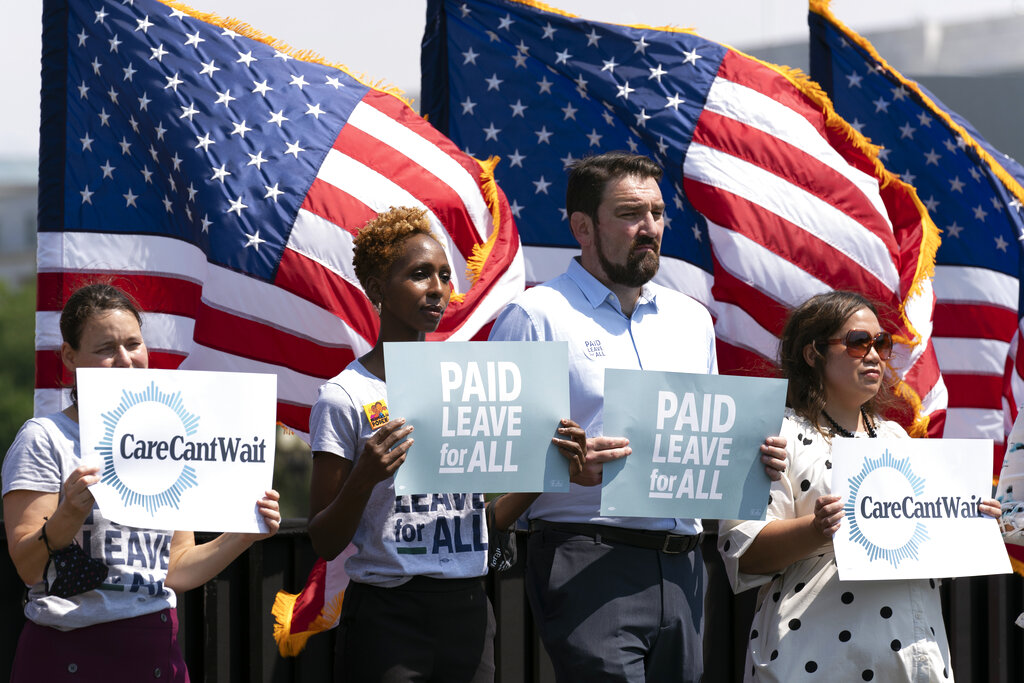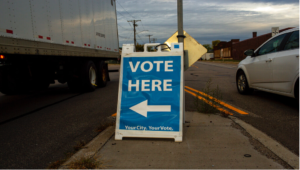
If disappointment were an art, the Build Back Better Act would be its masterpiece. President Biden’s legislative agenda has thus far failed to deliver on one of its critical promises: paid leave. The proposal initially offered 12 weeks of paid leave, which were later reduced to four weeks. After being removed from the agenda, paid leave was reintroduced, again as a four-week proposal. Now, it remains to be seen whether the Build Back Better Act, and by extension paid leave, will even survive votes in the House of Representatives and the Senate. If it fails, paid leave may be off the legislative agenda until after midterms, or indefinitely.
The idea of paid leave has existed for over a hundred years. It was born in 1919, during the Congress of Working Women held in Washington D.C. Delegates at the conference determined that women should be entitled to six weeks of leave before, and six weeks after the birth of a child, while maintaining benefits equal to the minimum wage of women. These standards were adopted in the International Labor Organization’s (ILO) Maternity Protection Convention of 1919. Yet in 2021, paid leave is still not a reality in the United States: the very country where the idea was born.
Its lack of paid leave policies makes the United States an anomaly among ‘developed’ states. It is the only member of the Organization for Economic Co-operation and Development (OECD), and one of only eight states in the world, without a paid leave policy. On average, in OECD countries mothers are entitled to 18 weeks of paid leave. In the U.S, only California, New Jersey, New York, Rhode Island, Washington, and the District of Columbia have state-mandated paid leave plans. Under current U.S. law, employees at public agencies, public and private schools, and companies with more than 50 employees are entitled to 12 weeks of unpaid leave for the birth of a child. This is less than the 14 week minimum recommended by the ILO following childbirth.
The benefits of paid leave far outweigh its economic costs. The proposed program would cost $225 billion over the next decade. Workers would receive up to $4000 a month during leave, with at least two thirds of average weekly wages replaced. Without paid leave, a typical adult worker loses more than $9500 after 12 weeks of unpaid leave.
Access to paid leave carried physical and mental health implications. Healing from birth takes at least six weeks, yet in the U.S, one in four women return to work only 10 days after childbirth. With access to paid leave, birth mothers are able to recover physically. The policy has also been linked to better mental health for women, which is also seen when their partners take leave too. Men who take leave exhibit more involvement in their children’s lives and experience more stable partnerships. This leads to stronger and more long lasting father-child ties, as well as more collaborative forms of parenting. Children whose parents have access to paid leave are more likely to get vaccinations on time, be breastfed, and less likely to go to the hospital with an infectious disease. Overall, a paid leave policy of ten weeks reduces child mortality by an average of 10 percent.
From an economic standpoint, there are also benefits to offering paid leave. Workers with access to it are more likely to return to their jobs, instead of changing positions or exiting the workforce. Paid leave has also been linked to the growth of the overall labor force, particularly through the inclusion of women. Paid leave maintains employment for new parents, preventing drops in pay and reducing employment instability. In the U.S, it estimated that 26 weeks of paid leave would increase women’s labor force participation, leading to a rise in GDP of five percent. A paid leave program could also add $28.5 billion to the economy annually.
If 186 countries can offer paid maternity leave, why can’t the United States? The absence of paid leave for parents is actively harming workers in the country. The pandemic has only emphasized this, as parents and working women have seen their child care responsibilities increase without any form of support from the state. The United States is far behind the global average of 29 weeks of paid maternity leave, and 16 weeks of paid paternity leave. Now more than ever, parents need access to paid leave, something only 21percent of US workers have. The four weeks proposed by the act are not enough, but they are necessary, even if they are simply a first-step towards improving worker’s rights and establishing greater equity in the workplace.
Despite the country’s lack of paid leave thus far, there is widespread support for the policy. Approximately 82 percent of Americans support paid maternity leave, while 69 percent say fathers should also be entitled to paid leave. Support for paid leave policies is greatest among adults aged 18-29 and women, particularly relating to policies affecting fathers and adoptive parents. In a poll conducted by Paid Leave for All Action, 84 percent of likely voters, including 74 percent of Republicans, supported paid leave programs. A different poll, conducted by the Cato Institute found that 88 percent of Democrats, 71 percent of Independents, and 60 percent of Republicans back these programs.
Overwhelmingly, Americans support paid leave policies. The divide arises in questioning who should finance them: employers or the state? Democrats report higher support for government paid leave programs funded by new or increased taxes on wealthy individuals and corporations, compared with Republicans and Independents. Democrats were also more likely to favor paid leave funds finances through payroll contributions, as well as government provided tax credits for employers that provide paid family and medical leave. Republicans and Independents show less support for these proposals.
The future of paid leave in the United States remains uncertain. Whether the Build Back Better Act, and its provision for paid leave, passes will largely determine if, and when, paid leave will become a reality. However, one thing is clear: the government has, and continues to fail workers. Until there is a guarantee of paid leave, parents and caregivers will continue to have to choose between the physical and mental wellbeing of their families and their economic health.


